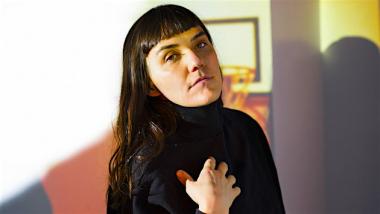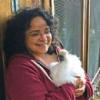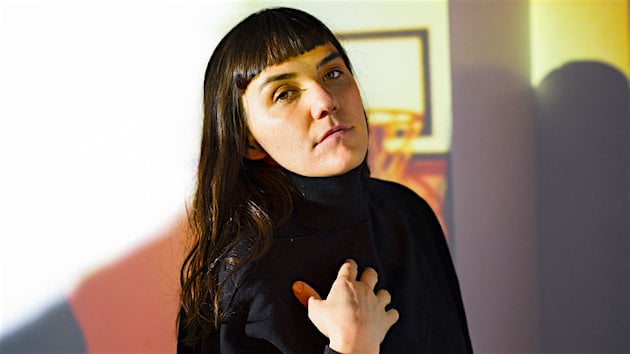
Given almost any instrument, object, idea, or an even animal or insect, composer and singer Emily Wells would likely make music out of the offering.
During the Texas-born artist’s 37 years on the planet, Wells has taken up violin (classical training, Suzuki, age 4), appreciates hymns and brass instruments (parental influence: father, a church minister; mother, a French horn teacher), produced and recorded original music beginning on cassette tape (since age 13), fused classical-music principles, message-rich lyrics and hip-hop (sensational cover version of Notorious BIG's Juicy, among others), and created an astounding sound palette demonstrated in performances, videos and on five full-length, self-produced albums (on her label Thesis & Instinct) employing violin, synthesizers, guitar, acoustic and electronic drums, toy pianos, glockenspiels ... not to overlook her remarkable vocals that range from folk-inflected to gospel, pop, punk, and near-operatic.
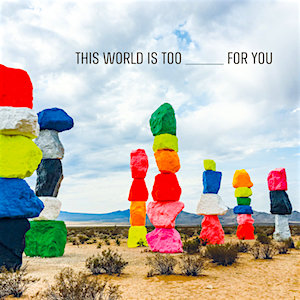 Add to that eclectic tools, techniques, and inspirations: a Tascam 388 tape machine, Neumann U87 vocal microphone, Pro Tools, various electronics; sampling, looping, and vinyl recordings; Nina Simone, Seattle-based singer Perfume Genius (Mike Hadreas), British singer Anohni, singer/songwriter Leonard Cohen, collaborations with artists including Dan the Automator, composer Michi Wiancko, bassist Joey Reina, drummer Sam Halterman and others — all combining to generate compositions inspired by themes of love and grief, the environment and feminism, melodic or rhythmic richness, ACT UP (an AIDS activist organization formed in New York in 1987), Johnny Cash’s Mama’s House (also the title of a song on Wells’s 2012 Mama), and extending, in a mesmerizing track on her newest album, This World Is Too ____ For You, to include a chamber ensemble impression of clouds of bugs “turning on” at dusk.
Add to that eclectic tools, techniques, and inspirations: a Tascam 388 tape machine, Neumann U87 vocal microphone, Pro Tools, various electronics; sampling, looping, and vinyl recordings; Nina Simone, Seattle-based singer Perfume Genius (Mike Hadreas), British singer Anohni, singer/songwriter Leonard Cohen, collaborations with artists including Dan the Automator, composer Michi Wiancko, bassist Joey Reina, drummer Sam Halterman and others — all combining to generate compositions inspired by themes of love and grief, the environment and feminism, melodic or rhythmic richness, ACT UP (an AIDS activist organization formed in New York in 1987), Johnny Cash’s Mama’s House (also the title of a song on Wells’s 2012 Mama), and extending, in a mesmerizing track on her newest album, This World Is Too ____ For You, to include a chamber ensemble impression of clouds of bugs “turning on” at dusk.
Would you believe she records most of her work in a floating studio in New York? Believe it — and read more of Wells’s thoughts and beliefs about her work.
In a video made about the works created with Michi Wiancko and the Saint Paul Chamber Orchestra for the ensemble’s Liquid Music Series [now 10 tracks on the new album and featured on tour], you mention the temporality of artists’ work. What has changed most significantly since the premiere of that project in 2017?
I’ve had that work go from being infinite in live performance to being finite, because it’s been recorded. On tour, I’m in the process of letting it be infinite again. I’ve changed too. I’m now on the other side of a big project, which is kind of a form of death. You mourn the end of that time: My entire brain and heart was in that project.
And where does that leave you?
You have ideas of how a work ought to reflect on you. Will it be beloved? You want it to be that, and to be personal. I want it to be in people’s lives in a granular way, like fabric. Of course, I won’t actually know if that has happened, because I can’t be in their kitchens listening while they’re cooking or in their cars, singing along.
I’m also in a form of movement, propulsion, and attachment because of touring it. This is a way I can participate with the audience, through live shows. While I’m kissing it goodbye, I’m getting a whole new experience.
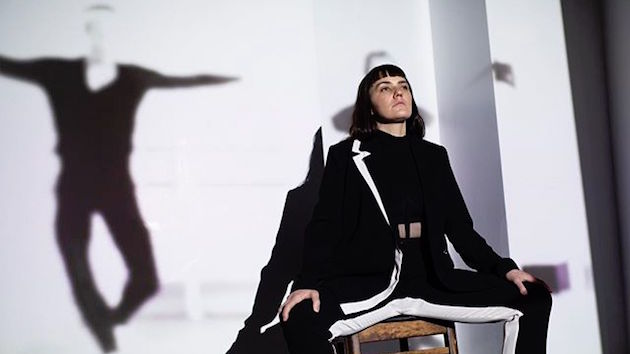
You’ve produced five albums. Assuming each one delivered discoveries, will you speak about each one from that perspective?
Beautiful Sleepyhead & the Laughing Yakswas, 2006
I was in my early 20s. It was my first real attempt at recording and producing. I had done 4-tracks as a teenager, but this was really “get in there and figure out how to do it.” I learned to be my own editor.
The Symphonies, 2008
It was an aesthetic turning point. I’d grown up playing violin but didn’t know how to incorporate it into a live setting. I started messing around with a sampling pedal and Symphony 1 was born. It was challenging as a songwriter because it’s limiting: you can’t expand beyond chord progressions. And every song, I had to know how I’d do it live before I recorded it. Even though it was recorded in the studio, every string note, I played it out. I didn’t want it to feel canned.
Mama, 2012
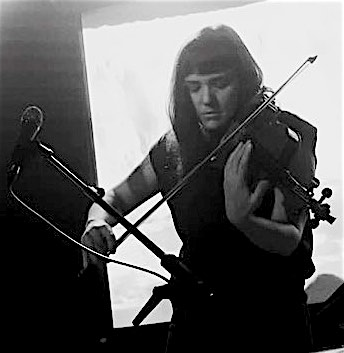
I wanted to go to traditional songwriting and still utilize the violin. I recorded a lot to tape so it expanded my ideas of the richness of that. Tape creates a pleasing, subtle texture and there’s more depth to the drums and bass.
The second, acoustic version though, I wanted to rerecord the demos. Could I strip them of the pretexts and would they still hold water? It was more challenging than the opposite direction would have been; moving from acoustic to going wild with production elements.
Promise, 2016
I almost wish I’d gone in and just recorded the songs in a distinct way. I worked on it for a long time and lost some of the spontaneity: like I hugged the songs to death. This is me being harsh and critical of course, but I also learned a lot about production. I learned to be decisive, cut things you get attached to. Someone I work with told me my drum approach was covering up the intricate string work. Sometimes I overcrowd my pieces and I learned not to do that.
In the Hot, 2017
This is like my response to the Promise album. I recorded it in about six months and I wasn’t overthinking it.
The World is Too ____ for You, 2019
I brought a cruel, exacting hand that I learned in Promise to this one. I wanted the chamber ensemble and the voice to stand out. I cut a lot of synths; some drum machines I had to slash and burn. But the clarity came early, in the songwriting. Even before sending songs to Michi, I had to be able to play them on a keyboard and sing them. Pieces have to come through in simplest form, or are they’re dependent on sleight-of-hand.
In a press release for the new album, it says the tracks are an underscoring of “the eco-feminist link between social and environmental transgressions.” Will you unpack that phrase?
It has to do with how climate and justice are completely linked to other forms of injustice: sexism, gender bias, class. We can’t compartmentalize this problem. Climate change has been pushed aside, but it’s linked to migration and class. If we link them, instead of parsing them, we’ll have more success. Climate crisis is affecting us in the sense that the people hurt first are in poorer countries or those with less resources. They often are women, so that’s the feminist connection.
Will you provide a few examples of how those beliefs and thoughts express themselves in your music?
It’s in a lot of the lyrics. “Eulogy for the Lucky” is blatantly clear: “Can’t make ice in the desert, can’t fool the heavens.” It speaks to my saying, it’s coming, people are suffering. There’s no denying it. I was reading about end times and thinking about taking comfort in the idea of eternity. But you can’t splice out the suffering in the middle.
In “Your Apocalypse Was Fab,” if you listen to the less-melodic violin parts, it’s meant to reflect insects. It doesn’t mimic a specific animal or bug. In “Misconceptions on Forever,” I was listening to the forest come alive every night. The synth part has this pulsing thing. I was trying to emulate what happened every night when the bugs would turn on. I was feeling not a part of that world at all, not organic, but wanting to be. It got reinterpreted into a string ensemble part, and when the violin comes up, that’s the singing of the forest.
Will you speak about two additional songs on the album? Maybe “Come on Doom, Let’s Party,” because you’ve said you inexplicably love third tracks on albums?
It’s different from the rest in that it’s driven less by strings and chamber ensemble and more by synths. It’s laid back, slow, sarcastic, yet earnest. It’s meant to be a joke, but it’s also dead serious: “Come on Doom, Let’s Party.” I’ve never told this before, but it comes from when I was a little kid and thought there was going to be a tornado. I had the only closet in the house. I wanted so badly to host my family in this closet. I didn’t want a tornado or something bad to happen, I just wanted closeness, to have something to offer as the baby in the family. I ended up sitting alone in my closet when it passed by. The line [the title] came from my writing a story about that incident.
“Hymn for the New World” was the first song I wrote. It was in some ways the road map to the whole project. It was the week after the 2016 election. I, along with everyone I knew, was completely devastated. I was lost, distraught, which is why I used the word, alleluia. It’s also a nod to the power of Leonard Cohen’s song. He died the same week I wrote that song. You can hardly say “alleluia” without invoking him. Then also, the notion of the hymn and the word has a broader history. They’ve been a uniting force and songs in that form have brought so much comfort to people. I wanted to look forward instead of feeling the feelings I was having. I wanted it to be simple musically: with a kind of familiarity, so it felt easy to sing.
Experimentally, listening to only the first ten seconds of each track on the new album, a unique mood, melodic or lyric-related character, texture and rhythm are established. Is that something you actively seek or are drawn to in music?
I’ve never thought about it, but I’m interested. That you encounter it like that, I like it. That’s the challenge in pop music: to establish what it is so quickly. I ride that weird line of a classical world where you have more time to spread your wings. Classical pieces aren’t too long, but I envy the less restrictions, the ability to experiment, especially in new classical music. It’s less, “let’s get to the point.” Pop music is meant to be digested quickly. Perhaps that started through radio formats and it stuck. Perhaps there’s also vitality to it that shouldn’t be ignored.
Tell us about your violin and floating studio.
I have a violin that’s a total workhorse and is totally beat up but keeps delivering. I have a sound booth that I had built. It’s a floating booth, raised off the ground so ideally, you’re not getting any hums or vibrations. It’s dead inside and isolated, so if you’re recording a bunch of layers of strings — well, let’s just say if you do that in a regular New York apartment, you’d have the buzz of the refrigerator times one hundred.
What’s next?
I’ve never played with a full orchestra and would love to. I’m an opposite extremist so I’m also interested in just piano and vocals and playing that as a show because it would be hard. But maybe beautiful as well.

